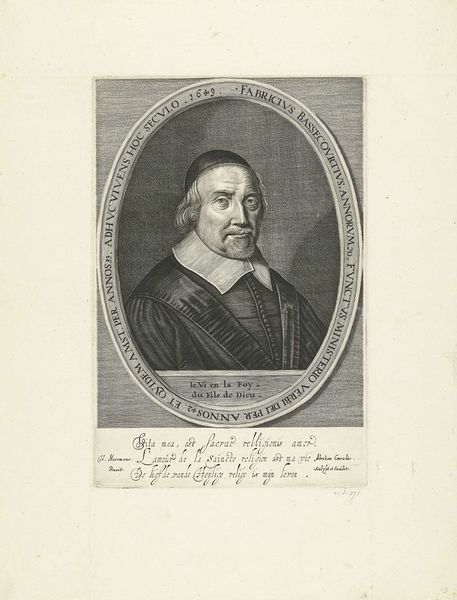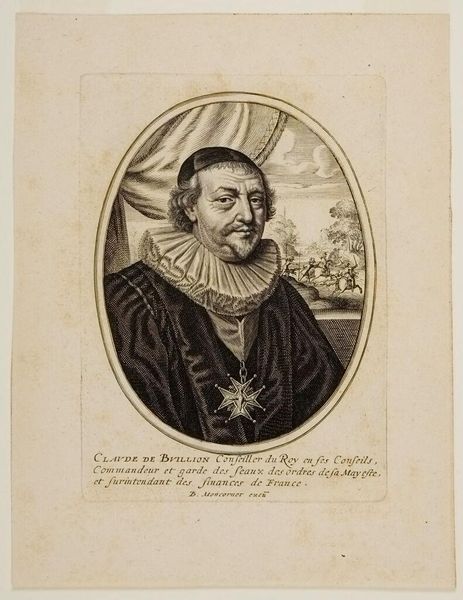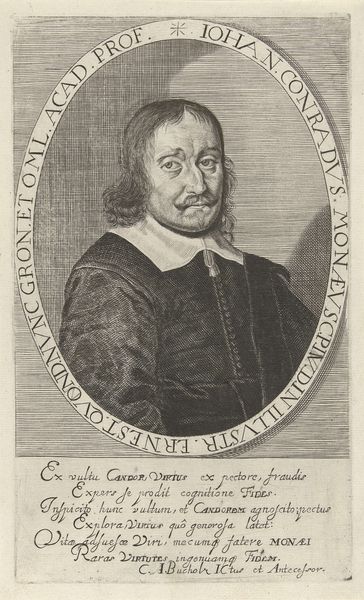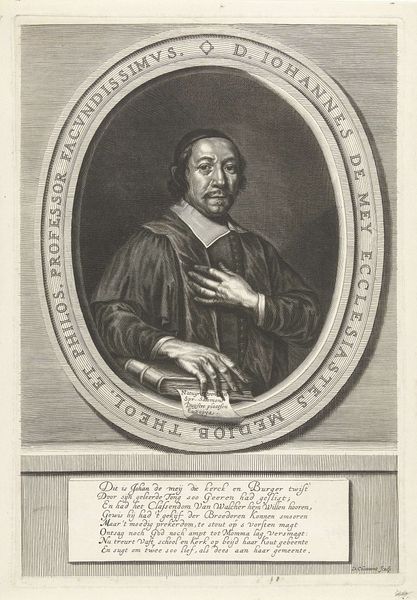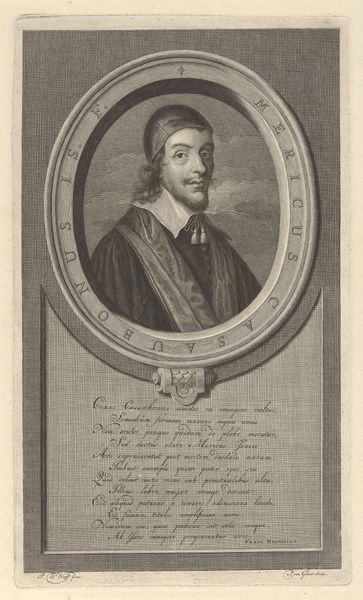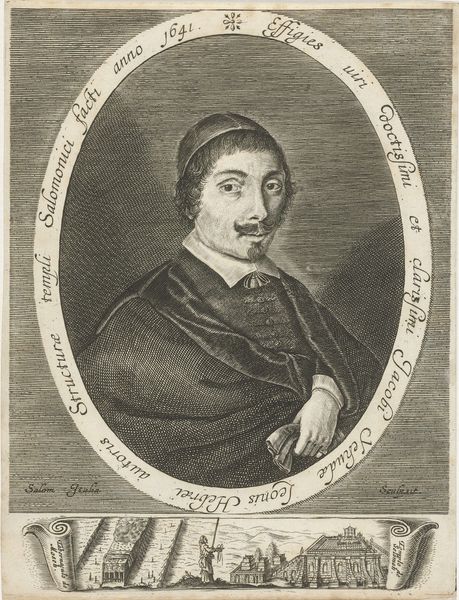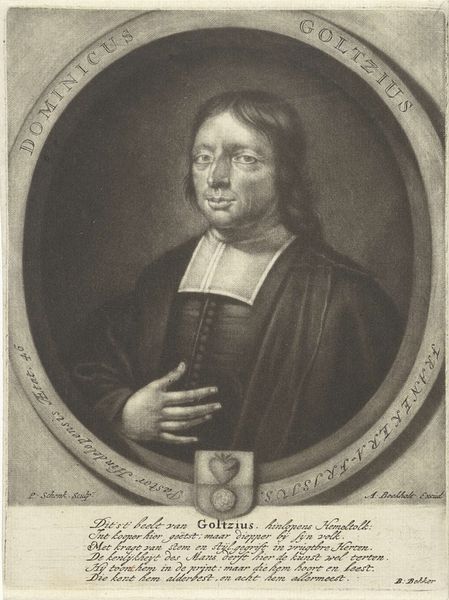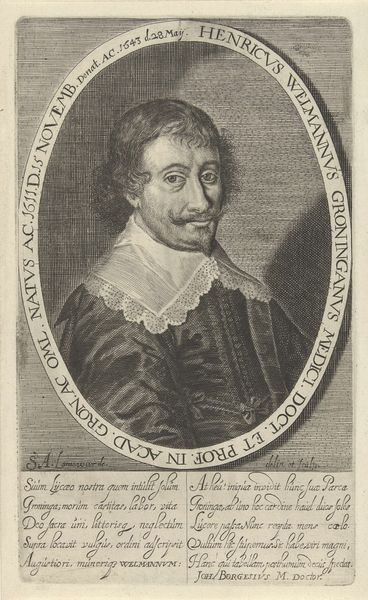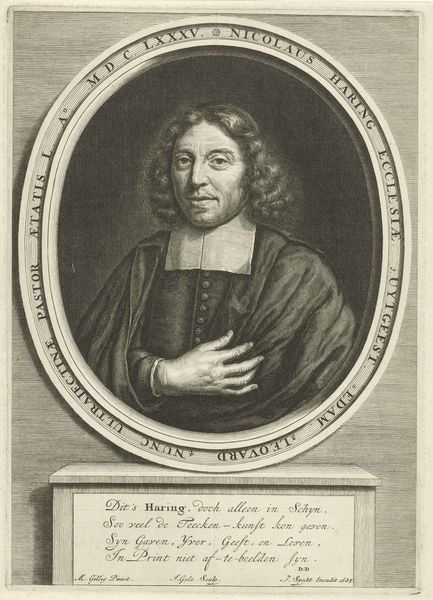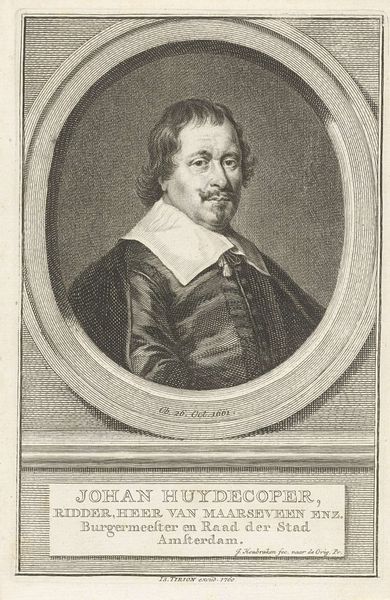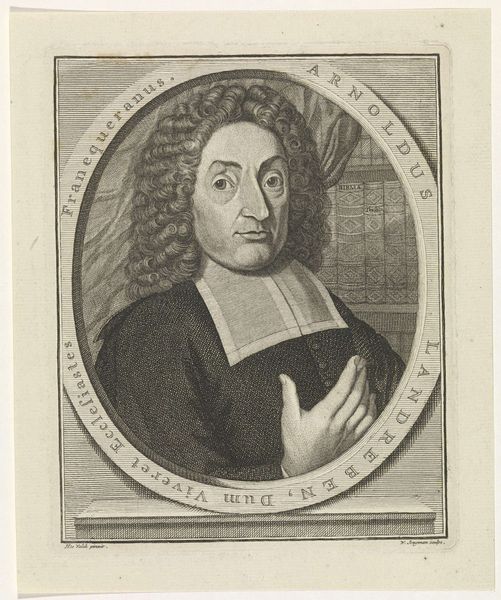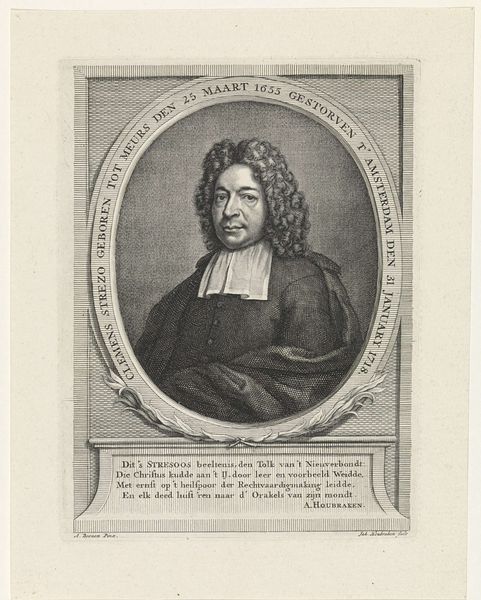
print, etching, engraving
#
portrait
#
baroque
# print
#
etching
#
old engraving style
#
engraving
Dimensions: height 362 mm, width 264 mm
Copyright: Rijks Museum: Open Domain
Curator: Let's take a look at this intriguing print, "Portret van Cornelis van Stavenisse op 53-jarige leeftijd," dating roughly between 1649 and 1679, attributed to Hendrick Danckerts. Editor: It’s…stark. The limited tonal range of the engraving emphasizes the detail, but also gives it a kind of rigid formality. The sitter looks a bit severe, maybe? Curator: Well, this was likely commissioned, so that formality fits the context. Portraits, especially engravings like this, played a vital role in disseminating images of power and status within 17th-century Dutch society. Consider the pillar and drapery—classic symbols of authority and respectability. Editor: And the etching process itself! The labour involved in creating this portrait; meticulously scratching those lines into the metal plate. You can almost feel the craftsman's hand at work, trying to convey the sitter's importance through careful labor. What materials would have been used? Curator: We are probably talking about a copper plate and then different types of etching tools to accomplish the various textures visible within the engraving. It also emphasizes the significance of printed images for a broader, literate audience to transmit cultural capital at the time. Think about it - this wasn't just about likeness, but communicating something specific about Stavenisse’s social standing. He clearly wanted to be remembered in a certain light. Editor: Absolutely, I wonder about access. A print like this implies circulation, reproduction – a multiplication of Stavenisse. Is he trying to become more... omnipresent, exerting influence through reproduced image? How many copies were produced, and who consumed them? What type of paper was used and from which workshop? Those details, often overlooked, shape the work's significance and power. Curator: These are important questions! Also to think about: how did people at the time receive the artwork? We read it in the twenty-first century as an antiquated representation but to people at the time, was the picture ‘speaking’ to them effectively? Editor: Considering those prints circulated as commodities within the cultural landscape. Looking closely at the engraved lines forming the details of his garments, how the fabric is depicted—there is so much material culture encoded here. Curator: Exactly. We are always dealing with multiple layers of meaning and context when approaching artworks. The more we analyze and historicize them, the better we can understand the intention but also the effect. Editor: Agreed. It all pushes us to ask, who were the makers and users, how was labor involved, and what meanings accrued through circulation and use.
Comments
No comments
Be the first to comment and join the conversation on the ultimate creative platform.
